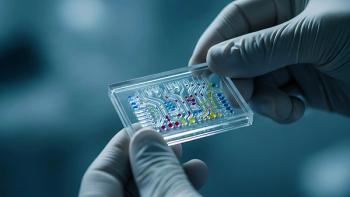
- BioPharm International-11-01-2017
- Volume 30
- Issue 11
Connector Integrity in Single-Use Biomanufacturing Systems
Connectors are a critical element in the process optimization of single-use bioprocessing systems.
Single-use technology has become more widely adopted in biopharmaceutical manufacturing, shifting from acceptance of the technology to standardization (1). Optimizing single-use systems and maintaining quality are as much functions of the types and configuration of the connector components as they are a function of overall process design.
A single-use system is at the mercy of its weakest link, which centers around the connectors used to unify the manufacturing assembly, such as valves, joint connectors, and blockers, among others.
Critical connectors
In single-use systems, criticality exists wherever a connection is made so that product can flow through. The drugs and therapies being developed are valuable, so any failure in the system will lead to an expensive loss, notes Scott Herskovitz, vice-president of sales and marketing at Qosina, a Ronkonkoma, NY-based provider of stock components for medical devices.
Connection types vary depending on the classification of the manufacturing environment in which the connection is being made, says Todd Andrews, global sales and business development manager, Bioprocessing, Colder Products Company (CPC), a provider of quick disconnect couplings, fittings, and connectors for plastic tubing based in St. Paul, MN.
“Any connection where product sterility could be compromised is important. Critical connections can be located upstream where the end user is trying to protect the cell line, or downstream where patient health could be affected. The best defense against a potential breach in sterility is employing connectors that are well validated, robust, easy to use, and highly reliable,” Andrews says.
The importance of sterile connectors in the single-use bioprocessing system revolves around their ability to help maintain volume and product flow.
Their impact, as well the impact of other attachments such as tubing, to the system must be assessed as they may significantly change the system volume. This in turn can potentially lead to erroneous results when testing the system for sterility (2), according to the Bio-Process Systems Alliance (BPSA), an industry association that promotes and accelerates the adoption of single-use manufacturing technologies used in the production of pharmaceuticals and vaccines. Connectors and tubing should be assessed in qualification studies to determine their impact on the system, the BPSA said in a report (2).
For example, the diameter, wall, thickness, length, and material type of the tubing used should all be taken into account because these properties can affect the stiffness of the tubing under pressure. This can have an effect on pressure measurements, said the BPSA in its report. In addition, the organization recommends that any permeable membranes, such as vent filters or hydrophobic peel strips, on connectors should be isolated from the tested single-use system by shut-off valves or clamps (2).
The management of these connector elements is an important aspect of process optimization because the development of new drugs and therapies in single-use systems requires components that are made to a higher standard than those used in other industries, Herskovitz says. In particular, the materials with which various connectors are made must be able to withstand exposure to chemicals without introducing bioburden or other chemicals into the final product.
Furthermore, connections should reflect the manufacturing environment in which they are used as well as the risk associated with those connection. In a highly classified environment, such as ISO Class 5, for example, open connectors, such as quick connects, are acceptable.
In this case, the environment has less inherent risk than a lower-class environment, according to Andrews. More and more, however, drug manufacturers are seeking connections outside of highly classified environments to improve flexibility and reduce overhead. In these situations, manufacturers are moving toward sterile connectors, Andrews notes.
The particular configuration of connectors in the bioprocessing network depends on the application, quantity, and price, Herskovitz says. “Molded connections give a higher level of confidence than zip ties, but there is a higher cost involved and a lengthier development time to configure and produce,” he remarks.
“Genderless” connectors simplify use and the inventory management of system components. In a genderless connector, each connector half is the same design, eliminating the traditional “male” and “female” connections where each side is unique, adds Andrews.
Genderless connectors avoid issues associated with male/female connections, such as accidentally specifying the same gender on each half and requiring more stock keeping units (SKUs), to ensure sufficient inventory of male and female components for proper matching, he says.
An example of the former situation would be having male connectors on both the bag assembly and the tube manifold, which would not allow a proper connection. This is typically discovered at the point of use, to the detriment of the operator. To remedy the situation, an operator might then need to create a makeshift tube assembly--assuming that components are readily available--sterilize it, and attempt a connection, all of which delay manufacturing and affect production efficiency, Andrews explains.
In the latter situation, genderless connectors reduce the number of SKUs needed at the component and finished-system levels. Fewer SKUs simplify ordering and reduce the burden on inventory control, which contributes to lower overhead costs and shorter lead times for single-use systems, Andrews says.
Connector criteria and cost considerations
There are certain key criteria for the types and quantity of connectors to use in a single-use system, including the quality of material from which the connectors are made, the manufacturing environment, and testing data, to ensure the components will not introduce bioburden or leachables/extractables into the product, says Herskovitz.
Andrews highlights other criteria that should be considered in selecting the right connectors. One of them is ease of use: in an industry where the primary cause of failure is operator error, well-designed connectors are important for reducing the opportunities for operator mistakes.
To test a connector’s ease-of-use, operators should be allowed to attempt installing the connections with minimal training. The operators who are putting together the connections on the floor are the best gauge of ease-of-use in real-life manufacturing conditions, Andrews asserts.
Durability is another key criterion; do the connectors still function properly when used in less-than-perfect conditions? “Some connectors, for example, function adequately if there is zero side-load or tension in the line. However, these conditions are hard to achieve in real-world applications. Robust connectors will work well in a variety of circumstances,” says Andrews.
Other key connector criteria are integrated functionality and availability. For example, biomanufacturers should seek out connectors that deliver the required functionality and performance without the need for extra equipment or processes.
Secondary equipment such as welders, sanitary clamps, or machined fixtures add complexity and become potential sources of problems or mistakes, Andrews explains. In terms of availability, some connector manufacturers offer connectors as part of higher-cost single-use systems that include other components--such as filters, bags, and tubing--that are not needed or wanted.
“For cost and process efficiencies, obtain connectors from connector specialists dedicated to delivering the specific types of connectors required for your system,” he states.
The cost consideration for using disposable versus sterilizable/reusable connectors is another factor in the adoption of single-use systems. In evaluating the costs between disposable and reusable connectors, an important consideration is the total cost of use versus initial acquisition costs alone, Andrews says.
For example, disposable connectors may have higher direct, per-unit costs, but they eliminate other costs that are normally associated with reusable connectors, such as: water required to clean and sterilize the connector, typically in the form of steam or water-for-injection (WFI); costly electrical power and utilities needed to generate steam and WFI; and downtime required to clean and sterilize reusable equipment between usages.
“With disposables, manufacturing can be up and running immediately after replacing the disposable assembly,” remarks Andrews.
“This is a classic question addressing the entire single-use movement,” says Herskovitz. “The consideration is volume. If you are manufacturing a billion doses, it is more cost effective to go the traditional route. However, the trends have been toward small batches of targeted therapies that serve a much smaller population. This has been where single-use systems have shined.”
The saving of time and money on cleaning and validation is important, but this means rapid changeover between batches, he notes. Using disposable connectors also reduces water and waste and eliminates cross-contamination.
“Manufacturers also have greater flexibility when using mobile single-use designs over pre-existing stainless-steel facilities. Single-use equipment can be duplicated with less effort and cost and can help you keep manufacturing closer to end-users. Stainless-steel facilities can take time to build; single-use is cheaper and quicker,” Herskovitz states.
References
1. T. Andrews, “The Standardization of Single-Use Components for Bioprocessing,”
2. Bio-Process Systems Alliance, “
Article Details
BioPharm International
Volume 30, Number 11
November 2017
Pages: 24–27
Citation
When referring to this article, please cite as F.Mirasol, “Connector Integrity in Single-Use Biomanufacturing Systems,” BioPharm International 30 (11) 2017.
Articles in this issue
about 8 years ago
FDA Overhauls Inspection Process and Field Operationsabout 8 years ago
ADC Development Robust Despite Lackluster Performanceabout 8 years ago
Change Control for Standard Operating Proceduresabout 8 years ago
CDMO Acquisitions Build Strategic Supplier Baseabout 8 years ago
Pump Head for Shear-Sensitive Pumpingabout 8 years ago
Dip-Molded Plastisol Y Connectorsabout 8 years ago
Analytical Data System Updateabout 8 years ago
Temperature-Controlled Shipping Solutionabout 8 years ago
Evaluating Surface Cleanliness Using a Risk-Based Approachabout 8 years ago
Awards Recognize Bio/Pharma Industry ContributionsNewsletter
Stay at the forefront of biopharmaceutical innovation—subscribe to BioPharm International for expert insights on drug development, manufacturing, compliance, and more.





